Money talks. Full bike builds now frequently nudge over € 10,000 and frame only prices give little change from € 3,000. When a new player steps onto the scene boasting with the buzzwords of performance, radical geometry but also affordability, well, it’s hard not to take a closer look. The new Privateer 161 enduro bike is a polite “Fu@k you” to the industry’s ever sky-rocketing prices, but can it offer premium performance too? We test one to find out.
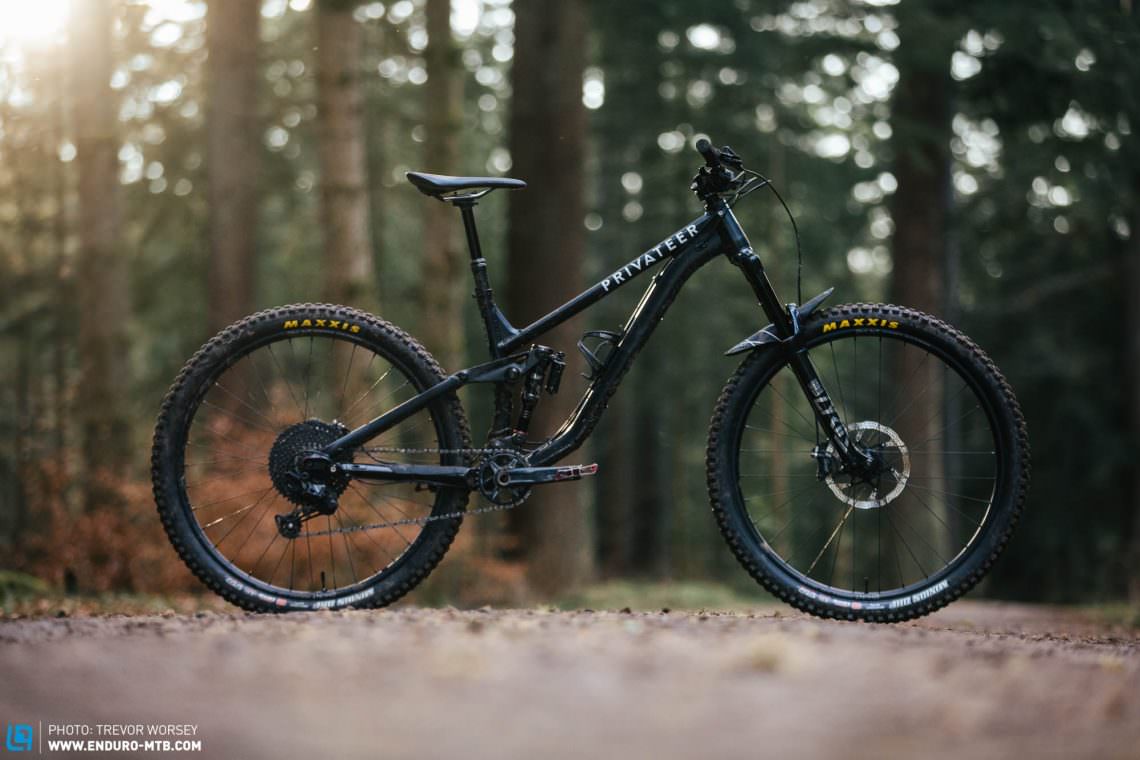
Even without an official stand, the new Privateer 161 caused quite a stir at last year’s Eurobike. Global MTB media, hungry for something exciting, sniffed out the raw aluminium frame with its radical angles and pushed it to the centre stage. With a progressive design the bike looked ready to go toe-to-toe with geometry specialists Pole, Nicolai and RAAW. However, there was nothing extreme about the price tag. Only € 1,499 for a frame with a RockShox Super Deluxe Ultimate shock! People went crazy! Fast forward a few months, and the wait is over – we now have a Privateer 161 on test.
Note: Privateer supplied us with a pre-production frame for testing. The bike features identical geometry and suspension layout to the production bike, but there will be a number of rolling changes that will address some of the issues we observed as described in our review.
Woah, look at that seat angle!
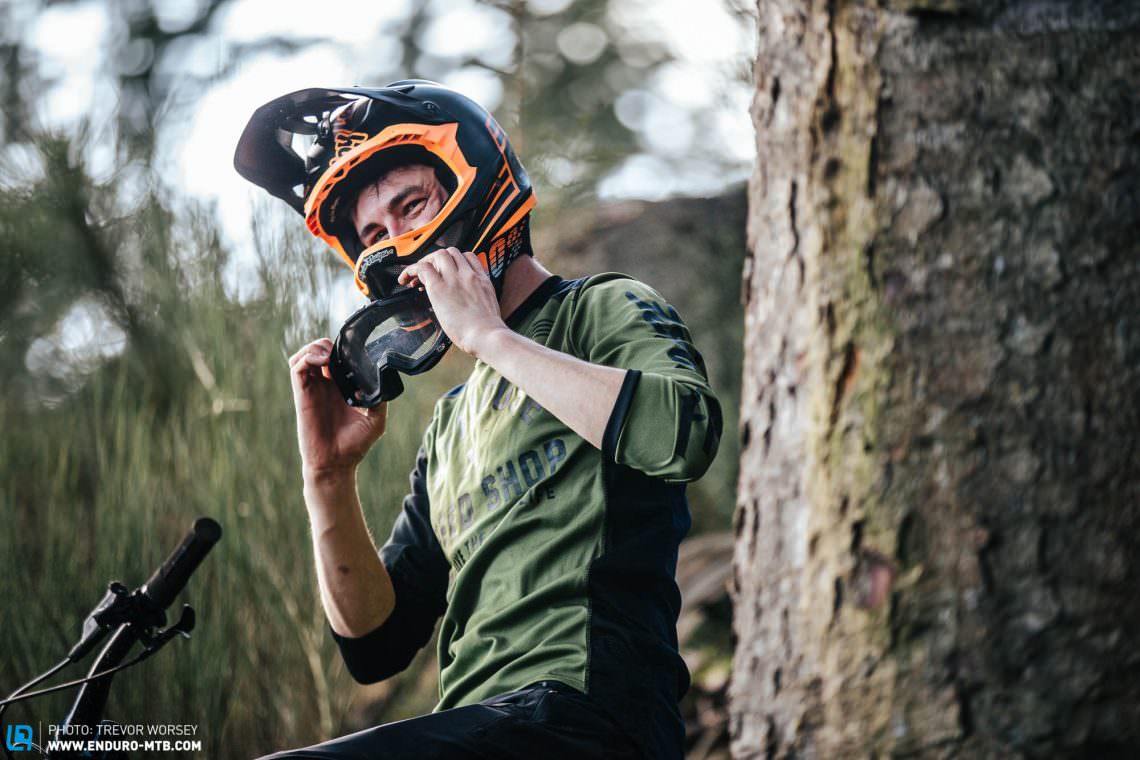
Privateer 161
€ 1,499
Specifications
Fork RockShox Lyrik Ultimate 170 mm
Rear Shock RockShox Super Deluxe Ultimate 161 mm
Seatpost TranzX JD-YSP39J 150 mm
Brakes Shimano Zee 4-Kolben 200/180 mm
Drivetrain Shimano SLX 34/10-51
Stem DMR Defy35 35 mm
Handlebar DMR Wingbar Mk4 800 mm
Wheelset Hunt Enduro Wide 29"
Technical Data
Size P1 P2 P3 P4
Weight 16,30 kg

The 170 mm RockShox Lyrik Ultimate proved a perfect match to the rear suspension. We would certainly consider this if we were building it up ourselves.
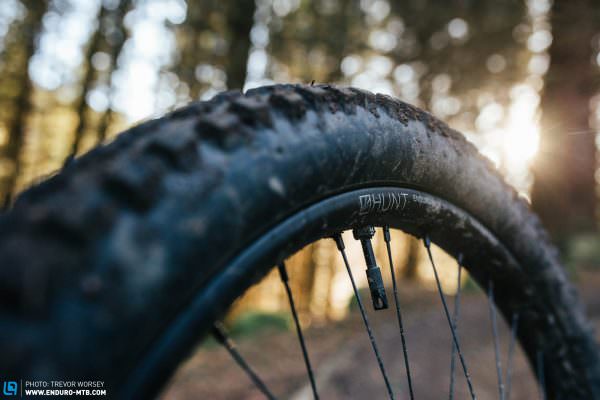
The test bike we were sent featured Rimpact inserts in the rear tire. We loved the increased damping and tire stability they provided.

If you’re considering entering some grass-roots races this year, or even a full blown EWS, we can think of few frames that can beat the Privateer 161’s performance/cost ratio.

We rode a pre-production bike with a M/M shock tune, which was very supportive but hard work for lighter or less-experienced riders. The production bike will feature a lighter compression tune
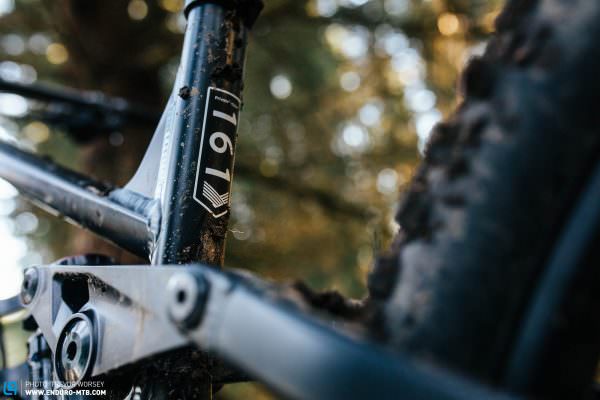
With 29” wheels and 161 mm of rear travel we struggled to find terrain where the Privateer 161 felt out of its depth.

The linkage is a one-piece design and with a double bearing arrangement on the drive side of the main pivot, the Privateer feels extremely solid when slapping into turns
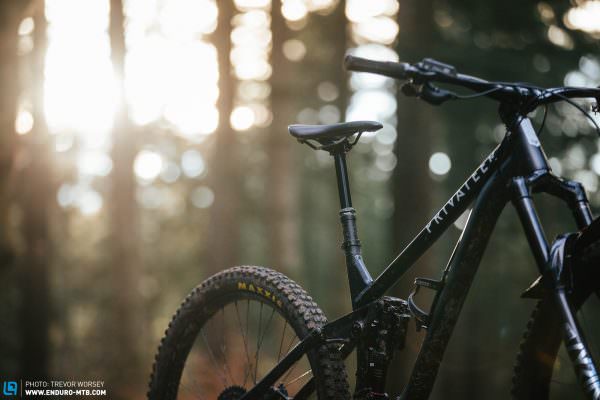
Our pre-production bike featured terrible seat post insertion depth, but Privateer have changed the tube design on the production bike for a longer drop.
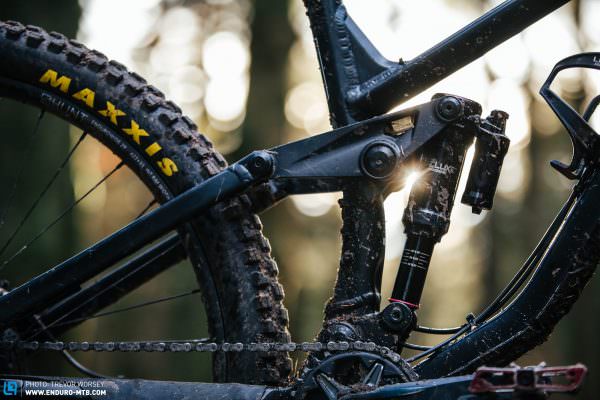
The basic mastic tape frame protection is basic and a little scruffy, but works impeccably.
We heard this a lot during testing. Yes, the Privateer 161 does have an 80° seat angle, but let’s come back to that in a second. While it’s still an undeniably large chunk of money, € 1,499 is a total bargain for a race-ready enduro frame with such a progressive design – on paper at least. Featuring 161 mm of rear travel, a low-slung Horst link suspension system, 29” wheels and on-trend geometry, the ethos and design of the Privateer 161 focuses on simplicity and no-frills performance, targetted at white-knuckle hardcore users and racers. Featuring external cable routing and secure cable clamps to ensure a rattle-free ride, home mechanics will also give an approving nod to the notched bearing mount faces, allowing bearings to be tapped out quickly with minimal frustration. The Privateer 161 frame will be available in either black or raw finish in four sizes, with full builds coming very soon.



The geometry of the Privateer 161
The Privateer 161 sits firmly in the radical camp when it comes to geometry. While the lengthy 490 mm reach (in size P3, the third of four sizes), 64° head angle and 446 mm chainstays are relatively progressive, it’s the 80° seat tube angle that will have everyone excited. The largest three sizes, P2, P3 and P4 of the Privateer 161 come with 29” wheels, while the smallest P1 is designed around smaller 27.5” wheels. Surprisingly for such a budget focussed bike, the Privateer 161 comes with size-specific chainstays, ranging from 434 mm on the smallest size, to 452 mm on the XL. A 30 mm bottom bracket drop should provide a nice feeling of integration on a 29er and the generous dimensions and slack angles result in a lengthy wheelbase of 1278 mm for the P3 size.
| Size | P1 | P2 | P3 | P4 |
|---|---|---|---|---|
| Seat tube | 400 mm | 420 mm | 450 mm | 480 mm |
| Top tube | 553 mm | 581 mm | 603 mm | 629 mm |
| Head tube | 120 mm | 110 mm | 120 mm | 130 mm |
| Head angle | 64° | 64° | 64° | 64° |
| Seat angle | 80° | 80° | 80° | 80° |
| Chainstays | 434 mm | 440 mm | 446 mm | 452 mm |
| BB Drop | 15 mm | 30 mm | 30 mm | 30 mm |
| Wheelbase | 1,221 mm | 1,250 mm | 1,278 mm | 1,316 mm |
| Reach | 445 mm | 470 mm | 490 mm | 515 mm |
| Stack | 613 mm | 633 mm | 642 mm | 651 mm |
Tried and tested Horst link suspension
The Privateer 161 uses a tried and tested Horst link suspension system, generating 161 mm of travel controlled by a RockShox Super Deluxe Ultimate shock. The kinematics have been designed with a gravity orientated chassis in mind. As such, progression is high, with the leverage ratio dropping from around 2.65 to 2.15 through the travel (meaning the Privateer should also work well with a coil shock). Anti-squat is high at sag but falls away rapidly through the stroke to minimise chain growth and anti-rise is low, indicating that rear braking forces will not have a significant influence on suspension performance. Designer Alastair Beckett explains, “We decided we want the bike to feel familiar and easy to get on with, straight away. The geometry was going to be quite progressive in itself, so we wanted the kinematics and chassis feel to balance this.” The one-piece linkage runs on large bearings and features a double bearing arrangement on the drive side of the main pivot to help resist pedalling torque.

Riding the Privateer 161
We were excited to test the Privateer 161: it has one of the most radical seat tube angles out there, rivalled only by the Pole Stamina, but features a more conservative reach and wheelbase. It doesn’t hurt that it’s also less than half the price of its Finnish counterpart. But the ultimate question is, does it work? We received our pre-production 6066-T6 aluminium frame and immediately put it to the test on a variety of different rides, from big 1500 meter climbing days, to clip-in-and-hang-on chutes. The test bike came with a hardcore build, featuring a 170 mm RockShox Lyrik Ultimate fork, Shimano SLX drivetrain and Hunt Enduro Wide wheels fitted with team favourite MAXXIS Minion DHF 2.5” tires.

Sitting on the bike, you can instantly tell that things are going to be a little different. Even with its generous 490 mm reach, the 80° seat angle makes the sitting position feel very compact and central over the bottom bracket. Hitting climbs, the rear suspension offers impressive support at 30% sag, sitting high in its travel without any bob from the pedals. On steeper inclines, the super-steep seat tube keeps you forward over the pedals in a very comfortable position, increasing control of the front wheel and avoiding the tiring ‘hanging-off-the-grips feeling that slacker seat tubed bikes suffer from. The Privateer 161 is clearly built for winching up steep transitions. Eagle-eyed readers will notice that the frame we tested offers woefully short dropper post insertion depth. While this is true of our pre-production bike, Privateer has changed the seat tube design on the production version for a straight design, providing far more insertion depth for longer droppers. `
In contrast to some aluminium bikes which can feel a little under-damped and dead, the Privateer 161 feels zingy and lively on natural flow trails, popping out of turns with eagerness. The frame feels low and balanced and the geometry excels through rough, supported turns. Here the supportive suspension and long 446 mm chainstays really let you lean through the turn with the bike automatically weighting the front wheel for huge amounts of grip. Much of this directness stems from the laterally stiff main suspension pivot. Whether this is due to the two bearings pressed on top of each other on the drive side, the one-piece rocker or just the manufacturing tolerances, when slapping into turns, the bike loves an inside line.


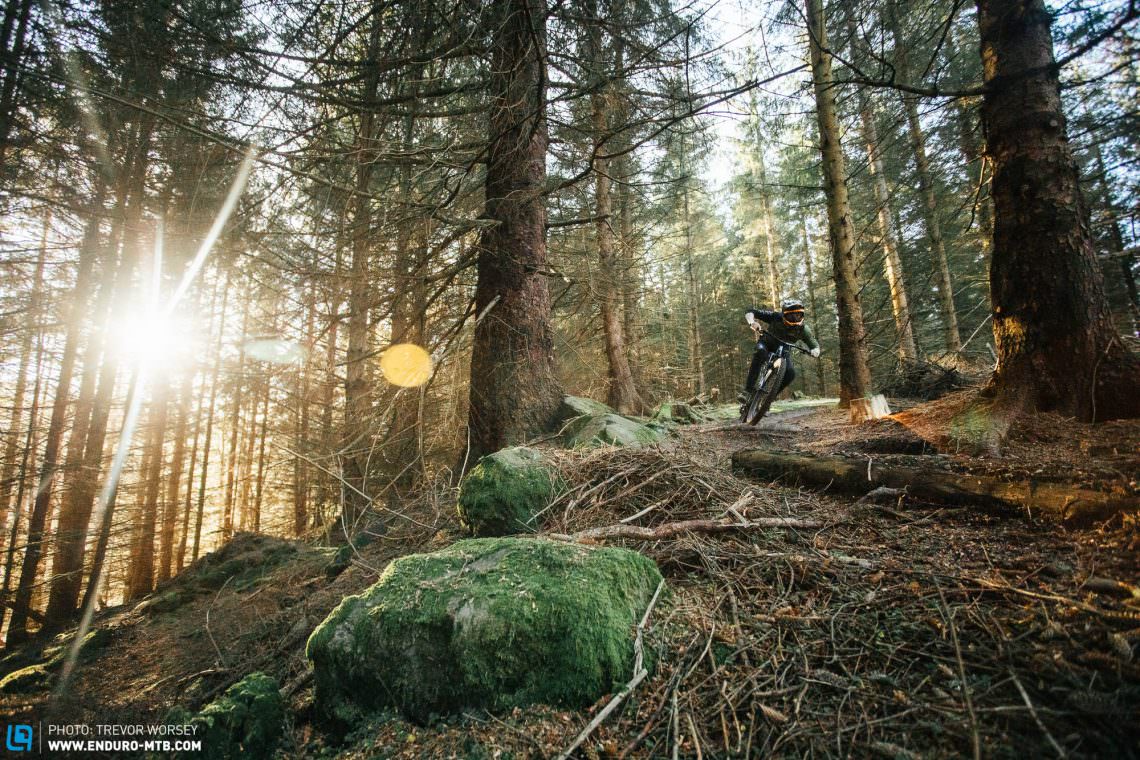
While talking about the suspension, it’s clear Privateer have targeted the kinematics at skilled riders. The suspension offers lots of progression and mid-stroke support, ramping up firmly and maintaining its geometry on steep terrain. Skilled riders will be able to make the most of the support, pushing the bike into the ground for massive grip. The trade-off is that the bike feels over-damped over fast hits and roots, especially for lighter or less aggressive riders. A strong and experienced rider will revel in this firm and racy feel but gentler cruisers will find the bike harsh and difficult to handle through rock gardens, finding it kicks and skips over rough terrain and loses grip if not ridden actively.
Note: Privateer told us that the pre-production bike we tested features a RockShox Super Deluxe Ultimate with an M/M (medium/medium) rebound and compression tune. They will be supplying the production 161 bikes with an M/L (medium/low) rebound and compression tune on the shock, which should improve the ride for lighter or less skilled riders.
Build quality: do you get what you pay for?
Those who are expecting to buy a super-premium frame like a Pole or RAAW at a bargain-basement price will be disappointed that Privateer have focussed more on the ride rather than going to town on the details. You will not find machined internal bearing seals, scalloped frame tubes, moulded frame protection or any secret compartments. The Privateer is more of a workhorse than a boutique superbike. Some of the welds aren’t the prettiest and the adhesive tape frame protection does look a little basic. However, this should not detract from the appeal for its target audience. The Privateer 161 isn’t an outside-the-coffee-shop-poser. Instead, it’s a bike for thrashing. In our tests, the basic mastic tape protection keeps the bike really quiet and the frame has proven durable, functional and tough. Everything you need, just without any frills.
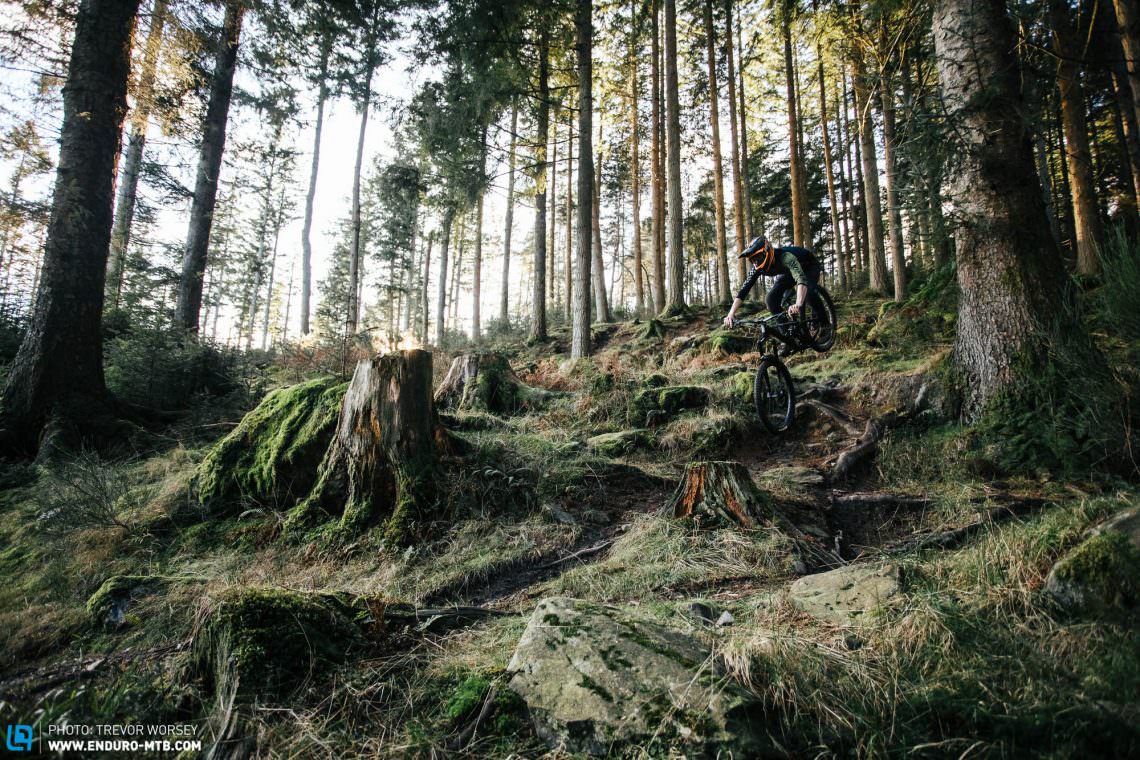
Is an 80° seat tube angle too steep?
This is the big question and one that will divide opinion. Over the last few years, disruptive brands like Pole and Geometron have made seat tubes increasingly steeper and have arguably started dragging the entire industry with them. However, is 80° a step too far? A quick calculation shows that given the same seat height and reach, a bike with an 80° seat tube will position the seat around 5 cm closer to the bars than a bike with a 76° seat tube angle. Geometry trends often swing like a pendulum and while radicals push the extremes what is often best for most riders is a compromise in the middle. On steep climbs the extreme steep tube angle of the Privateer 161 is advantageous, allowing you to sit tall and relaxed, conserving energy. However, on flatter trails and mellow climbs, the extreme angle and moderate reach transfer a lot of weight on to your palms, which can become tiring. If your normal rides resemble a Toblerone in profile, with steep ups and downs, you will love the effortless winching of the Privateer 161. However, if your rides are more mellow we would say 80° is a bit too far and there are more versatile bikes. Funnily enough, we’ve heard a rumour that Privateer have a shorter travel 141 on the way, with a slightly slacker seat tube angle for increased versatility.
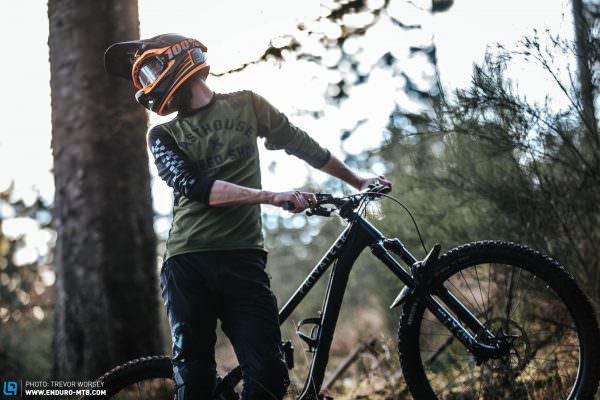

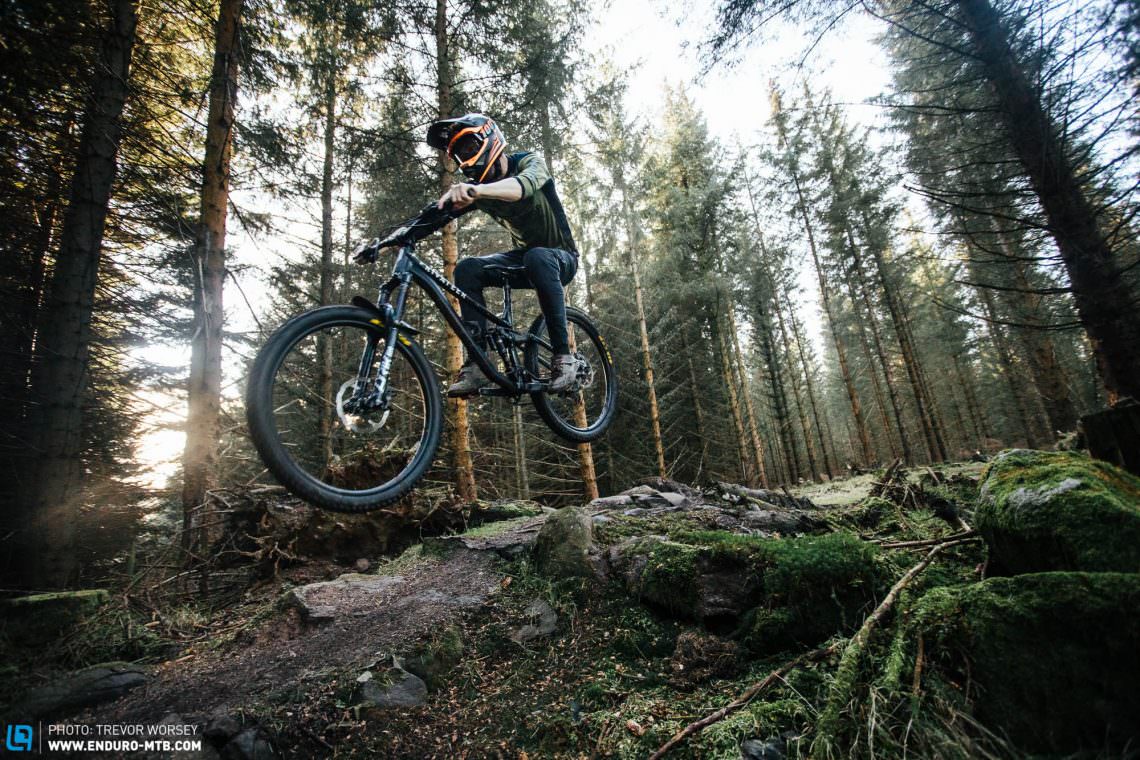
those who like to run a tall stack height will need to use a riser bar, so as to not further shorten the (already short) distance to the bars in the seated position
How does the Privateer 161 compare to the competition?
One of the bikes the Privateer 161 will inevitably be compared against is the new RAAW V2. Not only do they share similarities on paper and weigh about the same (3–3.5 kg for the frame) but the bikes also share a very similar aesthetic and Horst link suspension design. The Privateer features a steeper 80° seat tube angle (compared to the RAAWs 78.2°) and there is also a big difference in price, € 1,499 versus € 2,290. As tested, the Privateer prioritises huge mid-travel support and progressivity but cannot match the RAAW V2’s sublime planted feeling, grip and small bump sensitivity. The Privateer is a bike better used in strong hands, or as a race weapon, whereas the RAAW V2 comes at a premium, but will meet all those same demands while also offering a more relaxing and versatile ride feel.
Overall, the new Privateer 161 is an outstanding bike, targeted firmly at bringing potent performance to racers and weekend warriors who want to keep some money in their pockets for a pilgrimage to the Alps and a few overseas races. In this objective it happily excels. The Privateer 161 is a bike that will appeal to riders who know what they want. It’s not really a jack of all trades, instead it’s a master of one. With a lighter M/L compression shock tune, it should offer a more flattering ride for a broader spread of riders. As tested, it’s a rocket for those with the balls and skills to unleash its full potential, and a bargain too!
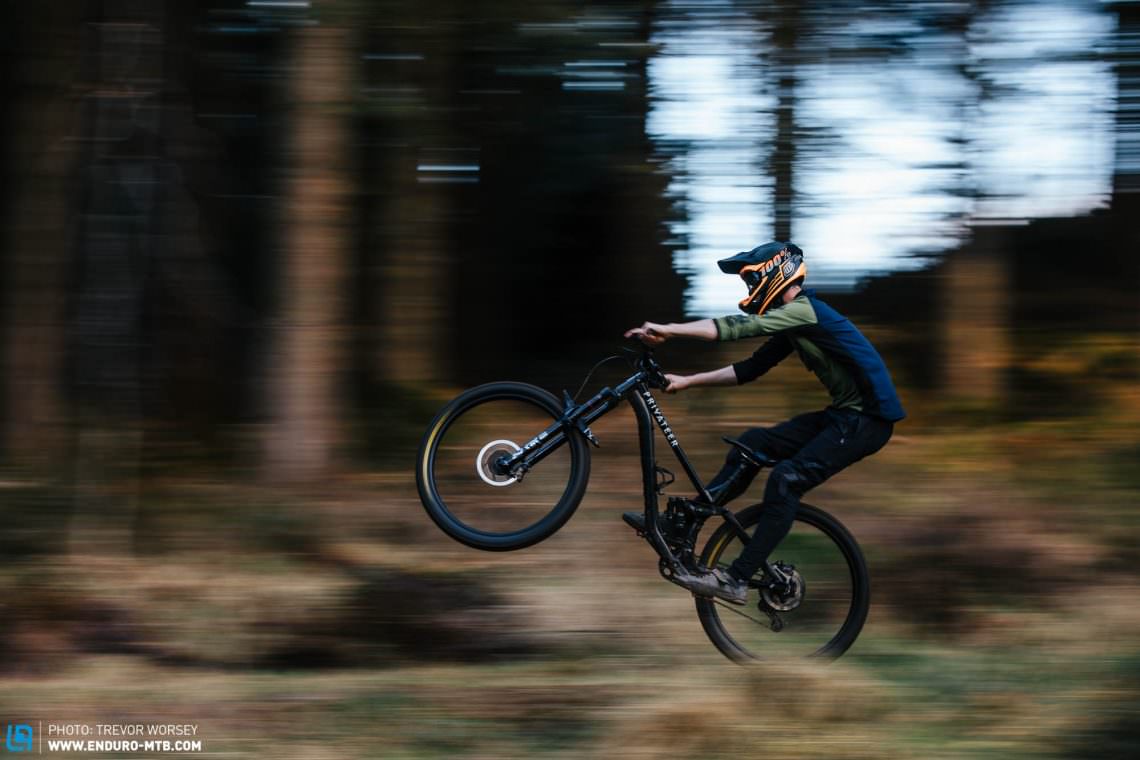
Conclusion
As bike design continually blurs lines between categories, championing increased versatility, the Privateer 161 goes against the grain. With a supportive and racy feel, it’s a bike built for a sole purpose: to winch up and plummet down. If you’re after an affordable enduro bike, we can think of few bikes that deliver so much speed for so little money. However, those who are after an all-rounder should look elsewhere.
Tops
- winch and plummet specialist
- balanced and potent handling
Flops
- steep seat tube angle reduces versatility
- budget feeling frame protection
More info privateerbikes.com
Did you enjoy this article? If so, we would be stoked if you decide to support us with a monthly contribution. By becoming a supporter of ENDURO, you will help secure a sustainable future for high-quality mountain bike journalism. Click here to learn more.
Words & Photos:









